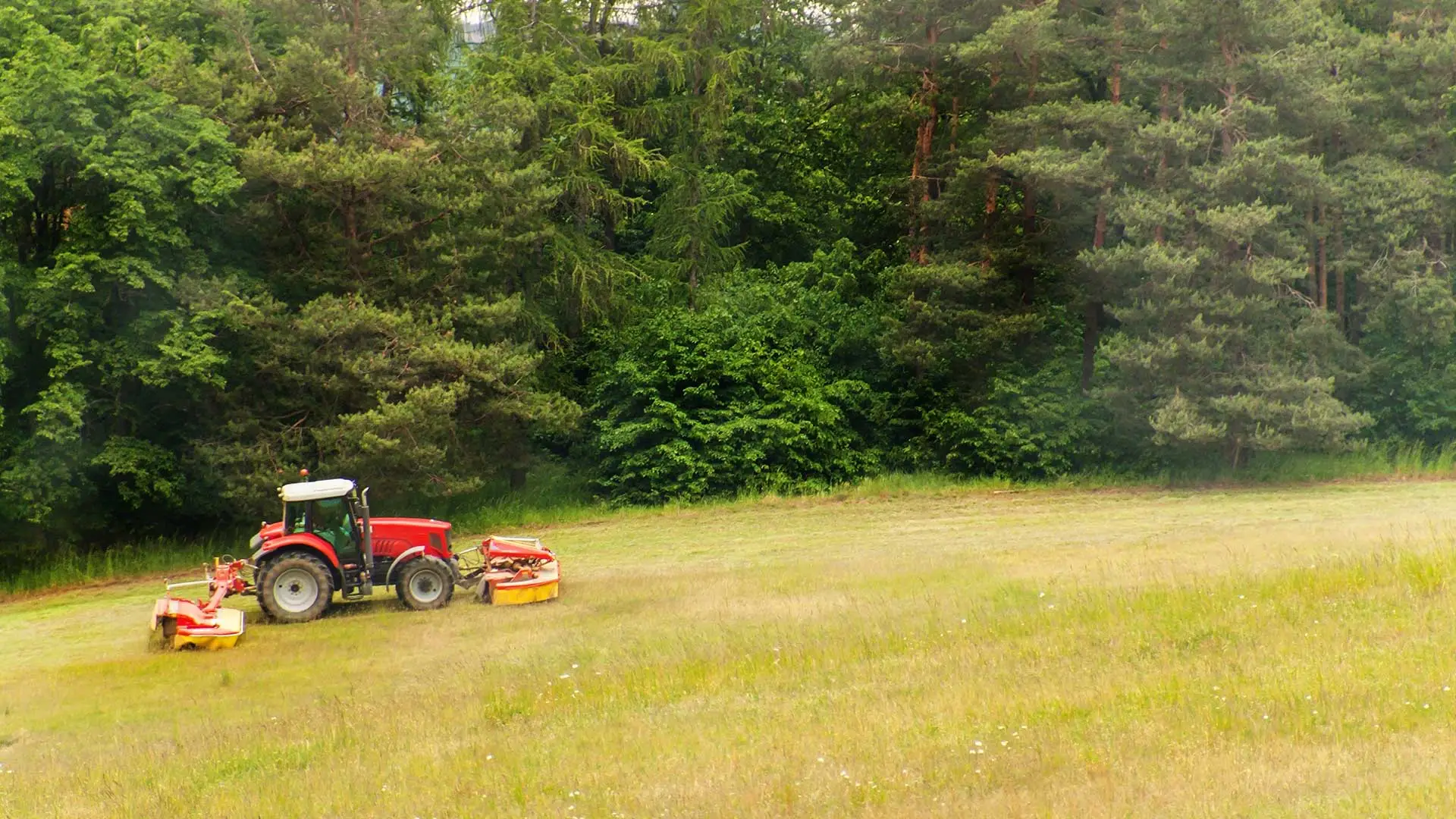Fall is the best time to overseed a lawn or repair thin or bare areas. The cool nights and mild, shorter days provide the ideal conditions for seed germination. Seed is better able to retain moisture in these conditions and seedlings will thrive without the extreme heat that occurs in the summer months. When seeding your lawn, the two important items to remember are to make sure and establish a seed-to-soil contact and to water the new seedlings regularly.
Establishing a seed-to-soil contact is very important. While simply throwing grass seed out on top of the ground may work, it is vital to work up the area being seeded first. A simple hard rake can be used to scuff up the area and break the ground. Once this is performed, spread the new grass seed on top and rake it in again. A tiller can also be used to break the ground but is not necessary. Lastly, if you core aerate your lawn in the Fall, the plugs that are being pulled out of the ground makes a hole for any new seedlings to fall into. This also establishes seed-to-soil contact.
The last, very important item, to remember after seeding is to water thoroughly. By keeping the seedlings moist, you will ensure seed germination in approximately 14 days. I recommend watering lightly, every day, for 2 weeks. You can then wean the new seedling off of this schedule by watering every other day and even longer stretches in between watering’s after 1 month. Remember, a lawn needs 1” of water per week for established lawns.




Comments (0)
Thanks for your comment!
Thanks for your feedback! Your comments have been successfully submitted! Please note, all comments require admin approval prior to display.
Error submitting comment!
There is a problem with your comment, please see below and try again.